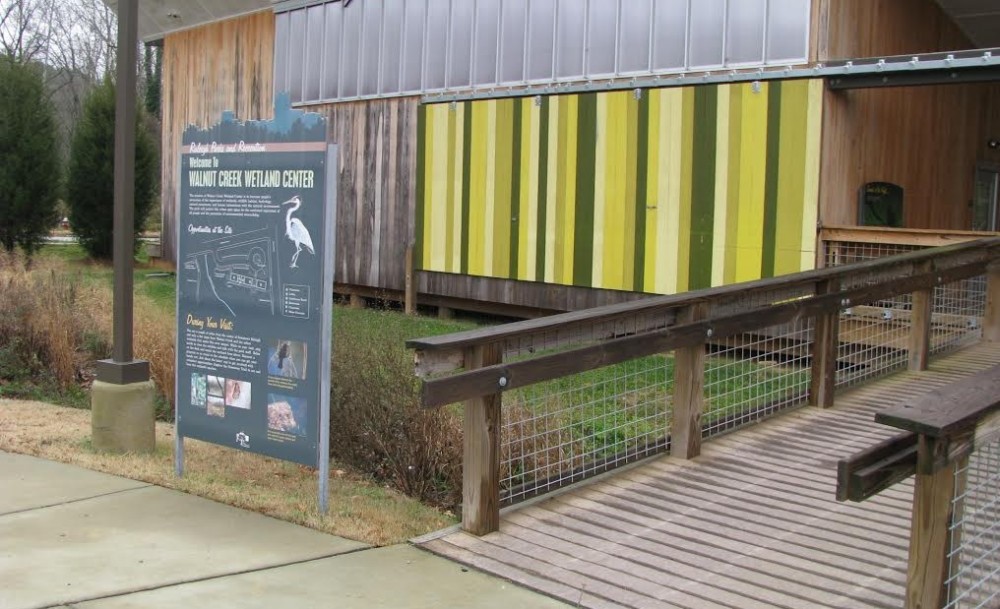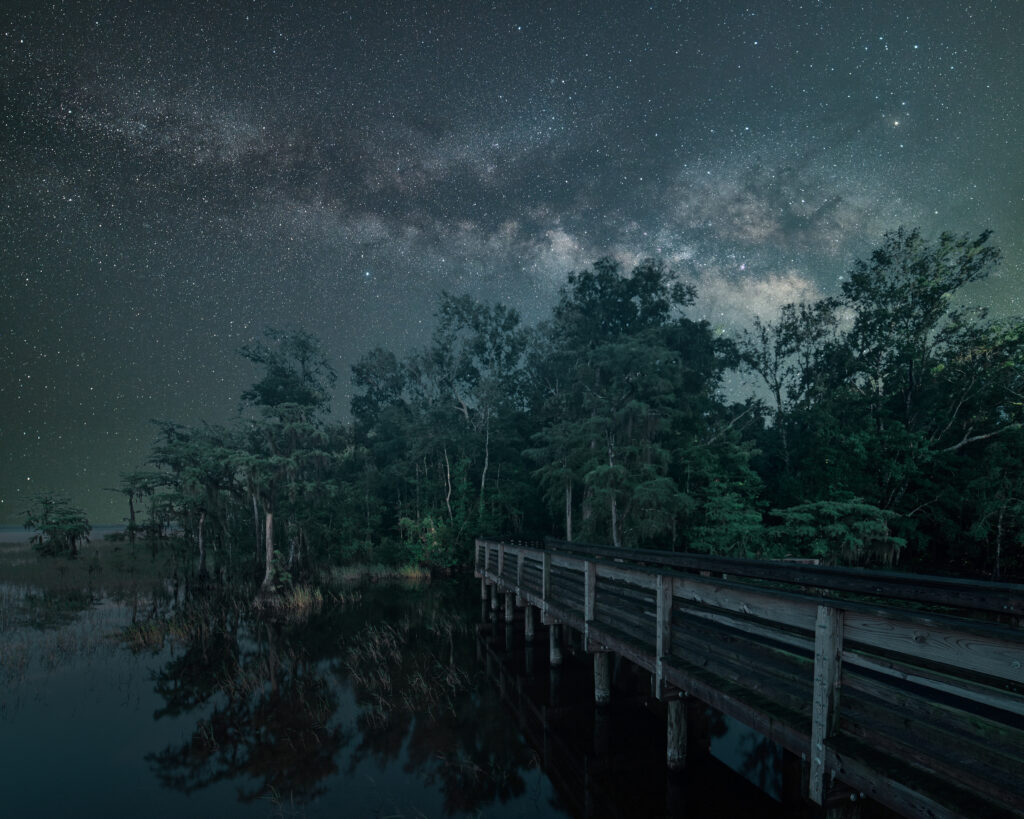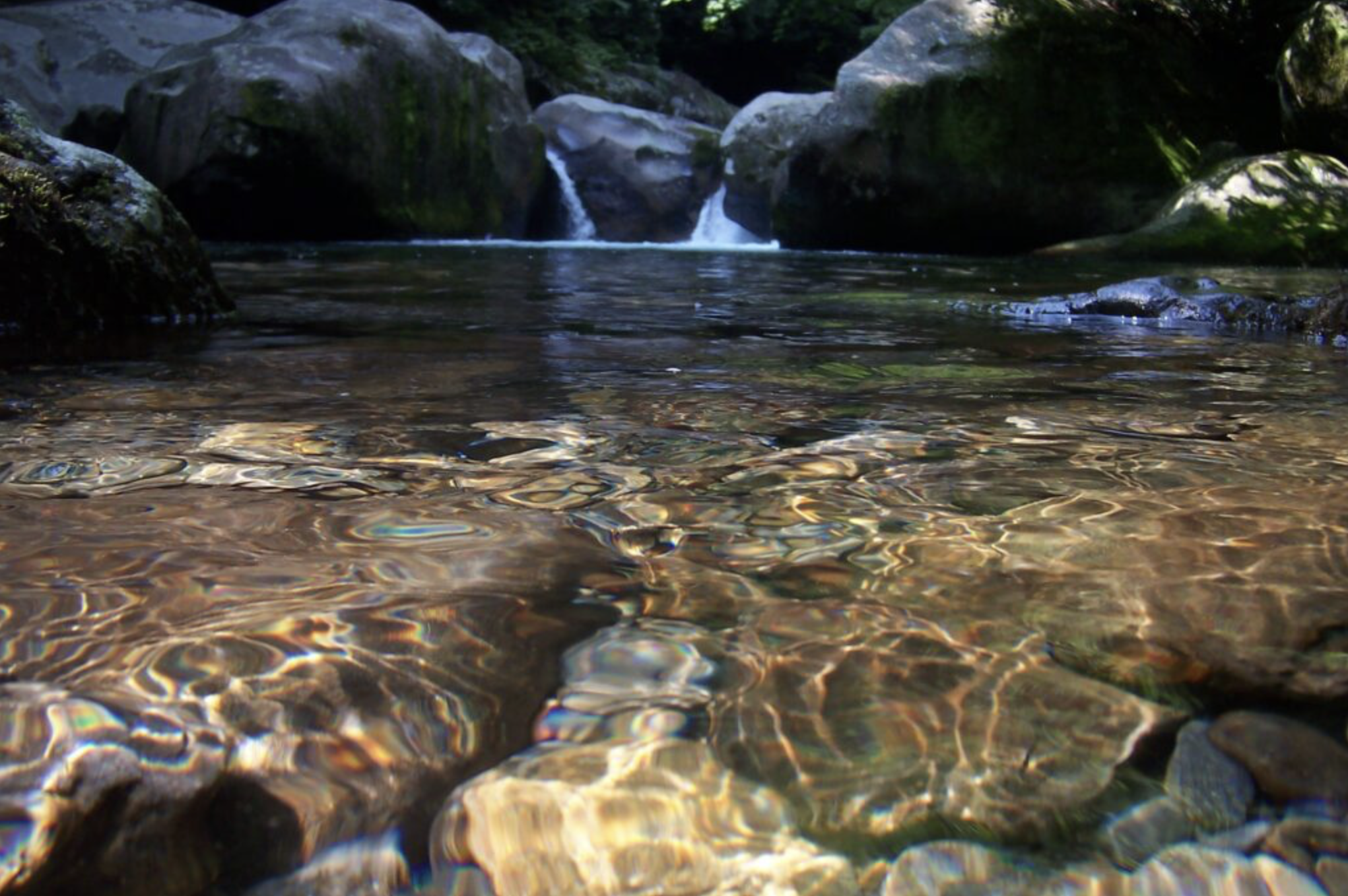Six Lessons for Engaging Communities With Few Water Protection Resources

Image: the entrance to the Walnut Creek Wetland Center in Raleigh
By Christy Perrin, co-coordinator of NC Watershed Stewardship Network (NCWSN), with help of NCWSN, Partners for Environmental Justice and U.S. EPA
Why do those of us who work on watershed protection have difficulties engaging those communities who are impacted the most by flooding, sewer overflows, lack of access to clean water or sewer treatment- those who may have the fewest resources to do something about it?
It can be hard to reach out to people who don’t travel in your personal or professional circles. Add an element of shyness or introversion, and it seems like a Herculean task for some. Yet, these communities may have the most to gain from our watershed management efforts, and we may have even more to gain by empowering new potential stewards and expanding our own understanding and community connections.
The NC Watershed Stewardship Network (NCWSN) steering committee set out to expand their own comprehension of these issues by listening to the story of nonprofit coalition Partners for Environmental Justice (PEJ) of Raleigh, NC at the PEJ’s signature success, the Walnut Creek Wetland Center. PEJ members Dr. Norman Camp, (founder and President), Bill Flournoy (also with Triangle Greenways Council), Parnell Bell and Frances Carmichael (with the Walnut Creek Wetland Center) shared their story with NCWSN members. EPA Environmental Justice coordinators Cynthia Peurifoy and Lena Epps-Price also joined the group to learn about and offer assistance to PEJ and NCWSN.
Dr. Camp shared the inspiring story of PEJ, started at St. Ambrose Episcopal Church in southeast Raleigh. Spurred by immense flooding during a hurricane and aggravated by an accumulation of trash in Walnut Creek, a small mission of church members who organized to remove trash in the surrounding wetlands grew into a movement to preserve the wetlands and engage neighborhood youth in learning about natural places.
These community efforts responded to a series of environmental harms the community has endured throughout its history. The sanitary sewer system the City of Raleigh built during the 1890s discharged directly into Walnut Creek and Crabtree Creek without treatment until the 1950’s. The sewage in Walnut Creek flowed through this southeast Raleigh historically Black community, where Dr. Norman Camp played outdoors as a child. During the Jim Crow south, policy and affordability led to development of property for Black families in the Walnut Creek floodplains in southeast Raleigh. The community has suffered consequences during flooding events.
With these events as a historical backdrop, the mission set about cleaning up trash, a hands-on effort that made a visible difference. Dr. Camp explained he “began to see the beauty of this area. It is only one mile from downtown and is one of the last great places in Raleigh…and the wheels began to turn.”
The group partnered with the City of Raleigh and other groups to realize the vision of preserving the ~60 acre wetlands as a park and creating a nature center to benefit the community. After much work and persistence by many, the City of Raleigh opened the Walnut Creek Wetland Center in 2009, and partner Triangle Greenways Council preserved an additional 150 acres in the Walnut Creek corridor. The center engages the community and students from nearby schools through programs and providing a safe place to explore nature. In 2014, a new bond was approved by voters – the City will develop a master plan for a wetland park surrounding the center, more fully realizing the dreams of PEJ. Ongoing casual engagement with NC State University faculty moved to a more formal collaborative with NCSU and the City of Raleigh- the Walnut Creek Wetland Community Partnership. The group seeks to engage students, faculty and community members in citizen science and community development projects.
It is no secret, (or maybe it is?) that Black communities statewide historically have quite literally been on the receiving end of poor, unfair, or a lack of water resource management. NCWSN members asked, what are ways for watershed groups to start a conversation about water in communities that have borne the brunt of unequal water management? How can watershed stewards gain trust in communities that have been burned before, whether those groups are led by a municipality or a non-profit watershed group? How can we build new partnerships to move forward?
A brainstorm discussion among NCWSN, PEJ, and EPA that followed the story of PEJ yielded six lessons for working with communities, presented below.
- Take time to build relationships
Do some research to learn who the community leaders are, where do community members spend their time, what are their interests? Anticipate spending time and have patience with the process. - Meet people where they are (and LISTEN)
Physically, go to the community, ask to attend community association meetings or faith-based events and ask people what issues they care about in their community. Put your ideas about what should happen in the backseat. Listen. What would get people interested in a natural resource project? Listen. - Create and adopt a shared vision.
Seek common goals to work on together. Be transparent about what you hope to accomplish through your efforts, and be open and flexible to alternative suggestions and adapting your plans to incorporate new ideas. When you can identify some specific goals and actions that you all agree upon, you’ve had your first victory together! - Small victories go a long way.
Removing trash from the Walnut Creek wetlands provided a visible success for PEJ. It gave them hope and inspired them to aim for something larger- the opening of a nature center and the conservation of over 200 acres of natural space came from one small victory after another. Installing a rain garden or planting trees are other simple activities you can do together to see progress and create momentum. - Victories involving youth offer a double bonus
Get kids out into nature, ask for their opinions and help, and involve them in hands-on activities. It may spark an interest in natural resources, and possibly spark their parents’ interest as well. Reach out to teachers, and partner with after-school programs. Teachers appreciate activities that can meet educational standards. - Change takes persistence and long-term involvement
This last lesson also speaks to community members in areas impacted by unjust watershed management. Dr. Camp strongly suggests that community members get involved with local decision-making processes- apply to serve on community boards and commissions, show up and speak up at meetings. The people sitting at the table make the decisions. Serving with a local watershed or other civic group is one way to get experience in civic engagement.
Finally, remember that people get involved and stay involved when their interests are somehow met. The only way to understand somebody’s interests is to ask and listen. We’re grateful for PEJ joining us to share their story, and for EPA Environmental Justice staff for sharing their expertise.
Some resources that I found helpful to my own understanding:
Boone, K. (2009). The Resilience of Ruinous Futures: Color, Urbanism, and Ecology in the Post-Jim Crow South. Intensions Journal. Issue 1 (Spring 2009). York University (Toronto, CA).
Camp, N. & Crumbley, D. (2014) The Master Plan: Grass Roots Activism, NC State Partnerships, and Engaged Local Government. Presented at the Walnut Creek Wetland Community Project Research Forum, NC State Hunt Library, Thu. Sep. 11, 2014.
Ueland, J. & Warf, B. (2006). Racialized topographies: Altitude and race in southern cities. The Geographical Review, 96(1): 50-78.
Walker, G. (2012). Environmental Justice: Concepts, Evidence and Politics. New York: Routledge.
- Categories:



